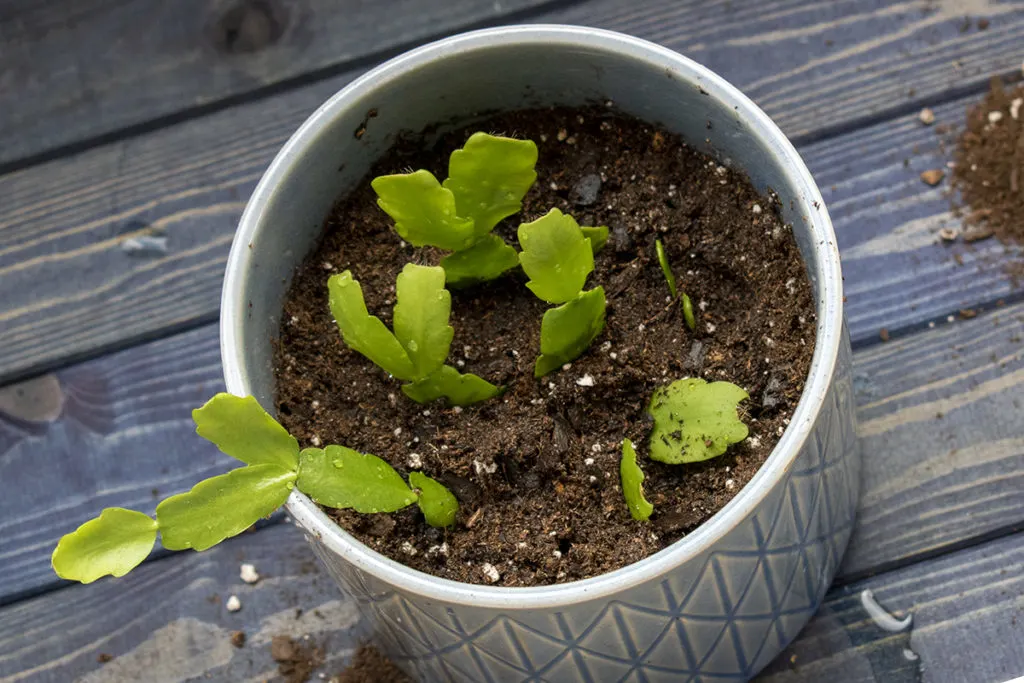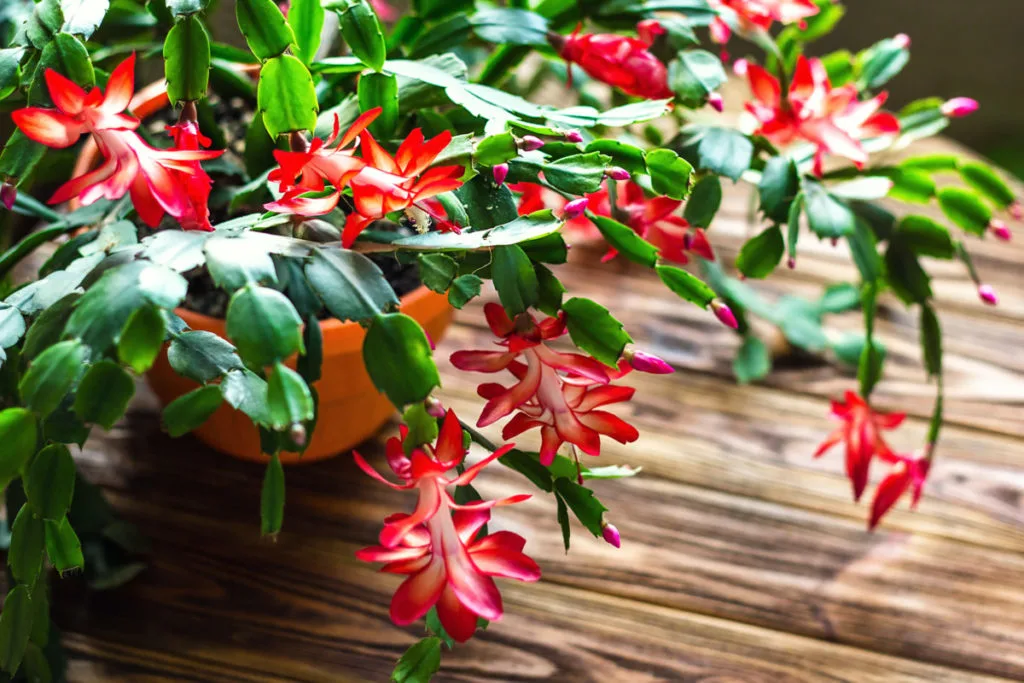
If you’re a Rural Sprout regular, then it’s probably safe to say you know I’m a huge fan of Christmas cactuses. And by Christmas cactuses, I mean all varieties of schlumbergera – no matter when they bloom; Christmas, Thanksgiving or Easter.
Many people mistakenly believe these plants to be hard to care for. I find the exact opposite to be true.
Once you know their preferences, it’s easy to have a thriving Christmas cactus. If you want the skinny on how to grow a gorgeous schlumbergera that blooms every year without fail, read our all-inclusive guide:
Christmas Cactus Care: More Blooms, Propagate & Identify Holiday Cacti
One area I didn’t touch on in that guide is pruning, and that’s what we’re going to cover today.
Do You Have to Prune Your Christmas Cactus?
Suppose you’ve got a glorious holiday cactus growing in your living room that’s been handed down from generation to generation, and you’ve never pruned it. In that case, you’re probably wondering if it’s even necessary?
And to you, I say, nope, you can keep on with whatever you’re doing. But…
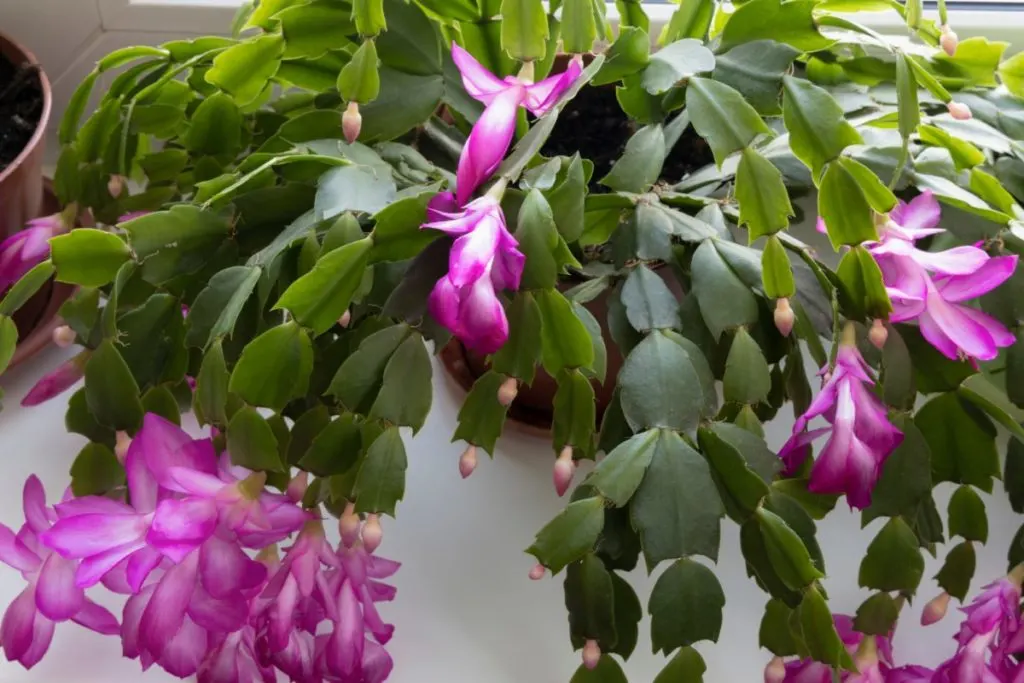
While you don’t necessarily need to prune a Christmas cactus for it to grow well, there are benefits to doing so.
Whether you have a newer plant or an older heirloom, we’ll discuss why a good haircut might be just the thing for your cactus. But first, a little Christmas cactus anatomy lesson.
Normally, we refer to a plant’s foliage as leaves, but with Christmas cactus, their ‘leaves’ are segments called cladodes. Each one of these cladodes contains everything needed to start a new plant.
Pruning a Christmas cactus can help your plant redirect energy where it’s needed most or conserve the energy it would take to keep growing new segments year after year and put it into blooms.
Why You Should Prune an Older, Larger Plant
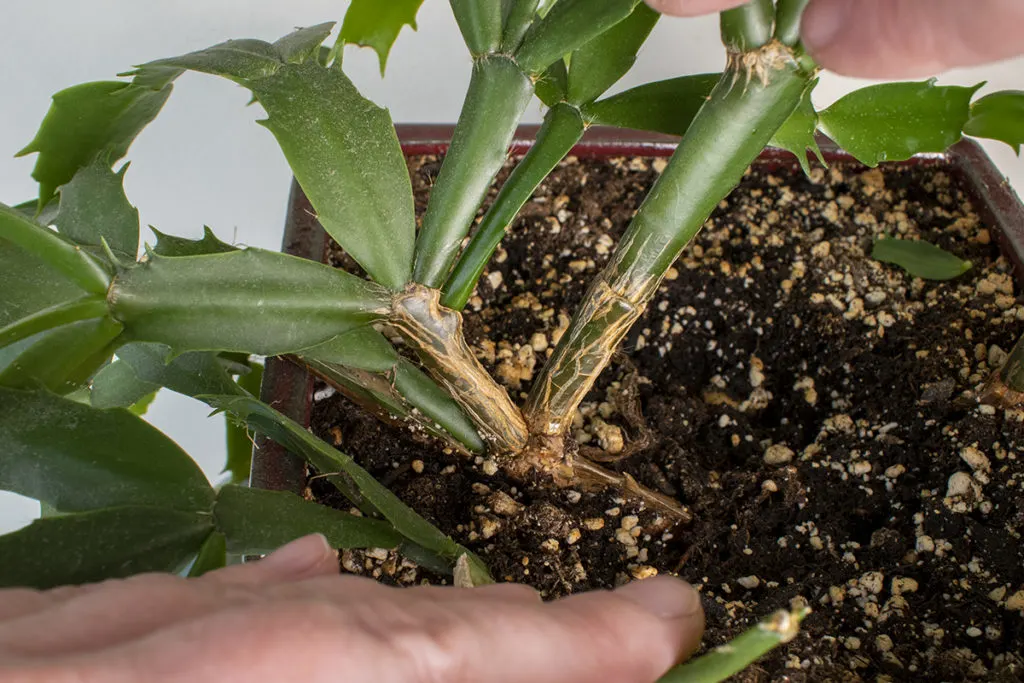
As Christmas cactuses grow larger, the cladodes in the soil from which the main plant grows become tough and woody. This is a good thing because it allows the plant to support its own weight while growing larger. As the plant ages, these woody stems become susceptible to cracking and splitting, and then your cactus is vulnerable to disease, especially root rot.
Christmas cactuses, in particular, are highly susceptible to root rot. Remember, they’re epiphytes, meaning they have adapted to grow on another plant.
A quick introduction to epiphytes.
We learned in elementary earth science that plants take up nutrients and water through a well-developed root system. And while that’s the case for many plants, epiphytes are not dependent on their root system for food and water. In fact, epiphytes mainly use their roots to hang on to whatever plant from which they’re growing.
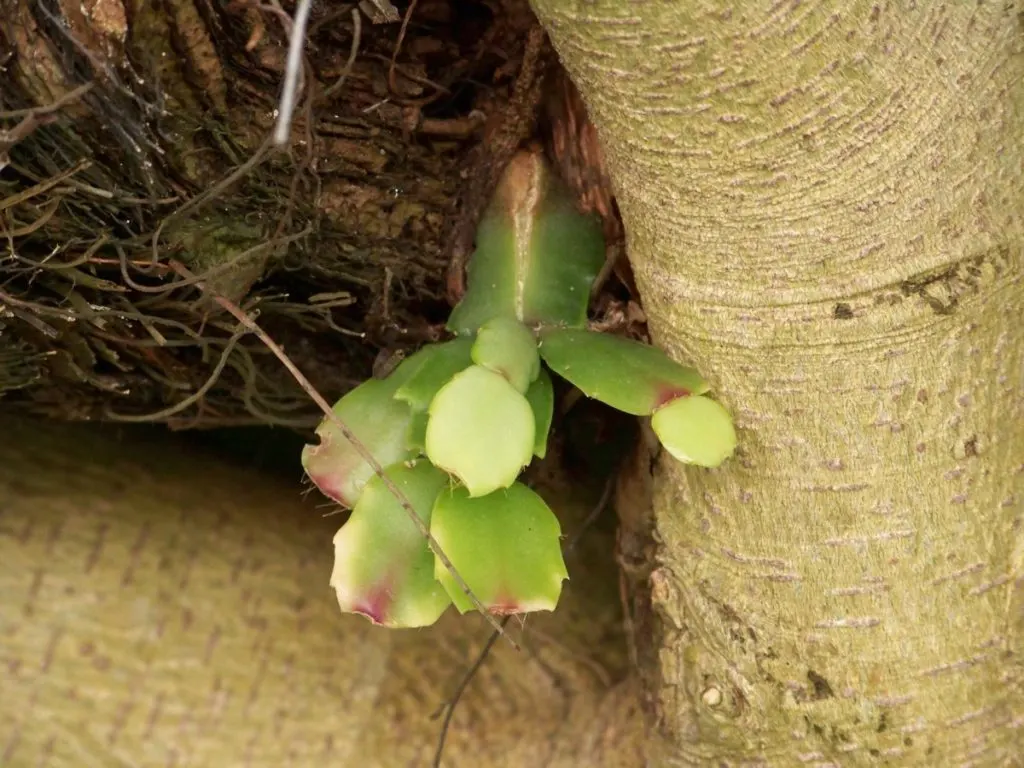
Christmas cactuses take in nutrients and water through their cladodes in addition to their roots. When found in the wild, the roots are rarely buried in deep soil; rather, there is a shallow root system clinging to whatever debris has collected in the crook of a tree or a crevice in a rock.
We come along, plant them in potting soil and treat them like any other plant, then wonder why our beautiful Christmas cactus is rotting from the roots up.
Why You Should Prune that Big, Beautiful Christmas Cactus
Air and good circulation are just as important to your older Christmas cactus as water.
So, it’s a good idea to prune a larger Christmas cactus to improve airflow within the inner parts of the plant. This allows the plant to take in more water and nutrients via its segments.
You’ll also provide better light penetration. If you want more blooms, pruning back an overgrown plant can help. Again, you’re making it easier for all parts of the plant to receive light, water and nutrients, which in the end means more flowers.
Pruning back a very large plant takes some of the weight off of older, woody stems, too, making it less likely they will crack.
And the final reason you may wish to prune a well-established Christmas cactus is to reinvigorate the plant overall. Pruning an older plant will cause new growth to emerge. The plant will put out new segments wherever you trim. This is a great way to deal with a leggy plant, as it will fill in, making for a bushier, fuller Christmas cactus.
Just think how great you feel after a fresh haircut and style!
But Tracey, I don’t have a big ol’ Christmas Cactus; mine is only a few years old.
Great! Believe it or not, you should prune that one too.
General Pruning for All Holiday Cactuses
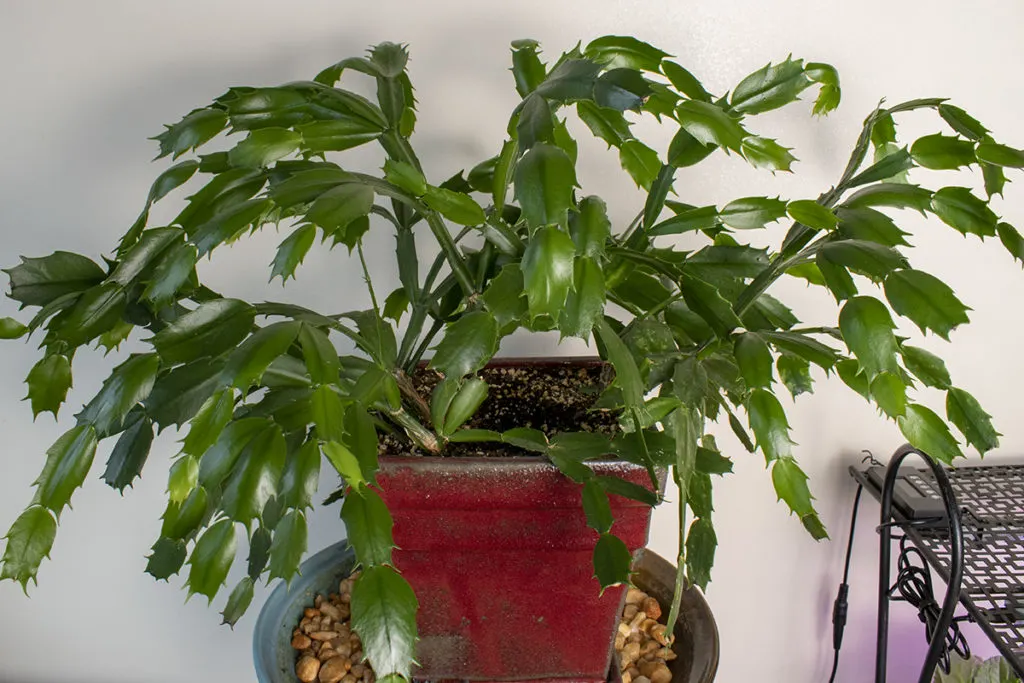
Both of the plants I photographed in this article are plants between two to ten years old. Neither are particularly big. I’ll use them to demonstrate the reasons to prune your Christmas cactus every year.
Prune a Scraggly Plant to Fill it In
If you’ve got a Christmas cactus that is all legs, you may wish to prune the plant to encourage it to grow fuller rather than longer. To do this, you’ll pinch back leggy growth to encourage the plant to grow outward rather than adding more length.
This is so much easier to accomplish when the plant is young. Once the plant is as bushy as you like, you can concentrate your pruning efforts on general upkeep. You can train the plant to grow in the direction and space you choose while it’s still young.
Prune Your Christmas Cactus to Maintain Its Shape
Perhaps your Christmas cactus is perfect as it is. Great, it’s a good idea to trim off extra growth each year to maintain that shape. This is especially important if space is an issue for you. Trim off longer segments that are starting to get a little too big for their britches.
Much like a haircut, regular pruning will lead to a healthy and robust plant. You’ll end up with more blooms, too, as the plant can redirect energy into making buds rather than expending more energy on new stems.
When to Prune Your Christmas Cactus
All schlumbergera should be pruned within a month after they have finished blooming.
Christmas cactuses go into a period of growth shortly after they have flowered, so you want to make any cuts before they start putting out new growth. And by pruning, the plant will redirect energy into putting out new segments where it has been trimmed.
If you miss this one month window, you can still trim the plant, but it may affect new growth and possibly blooms for that year.
How to Prune a Christmas Cactus
It’s not a necessity, but now is also a good time to wipe the dust off of your plant. As these plants take in moisture in the air through their cladodes, I like to wipe them down now and again to remove the dust and make it easier to absorb water.
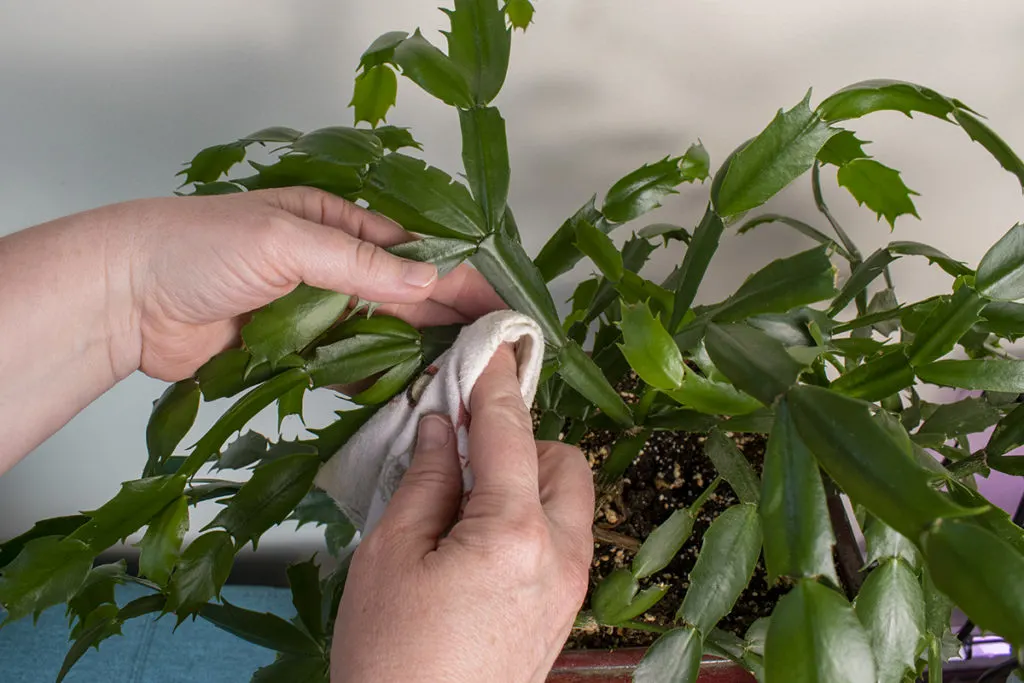
Pruning these segmented plants is incredibly easy, and unless you’re cutting into older stems, you don’t even need any special equipment.
Wash your hands first, then twist off the cladode where you want to prune the plant. Be sure you grasp both segments, close to the joint where they meet, then gently twist until they separate.
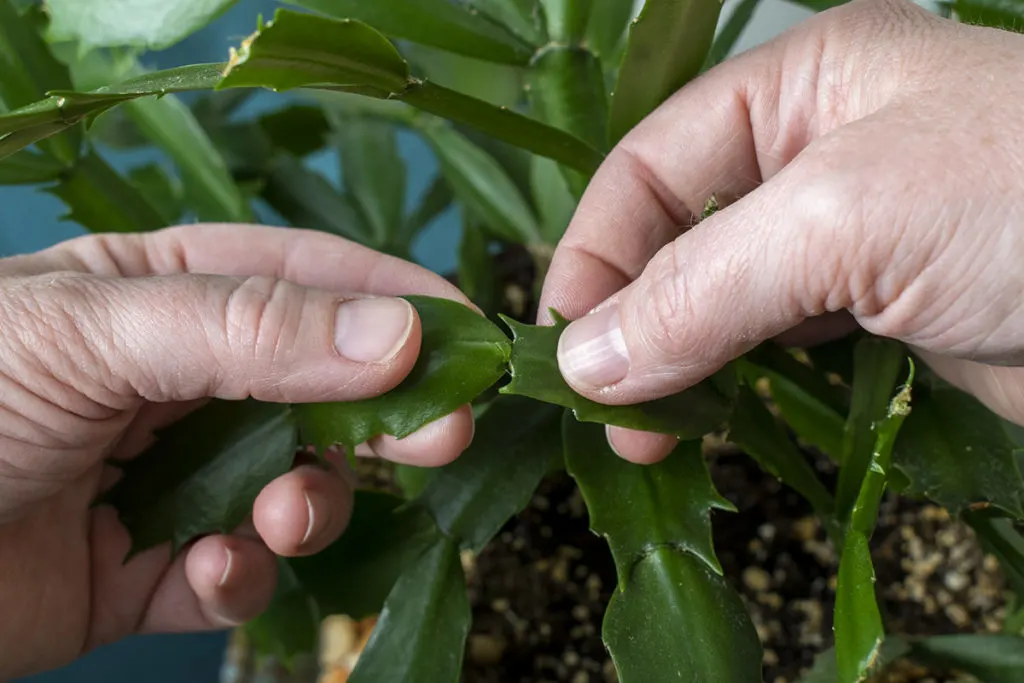
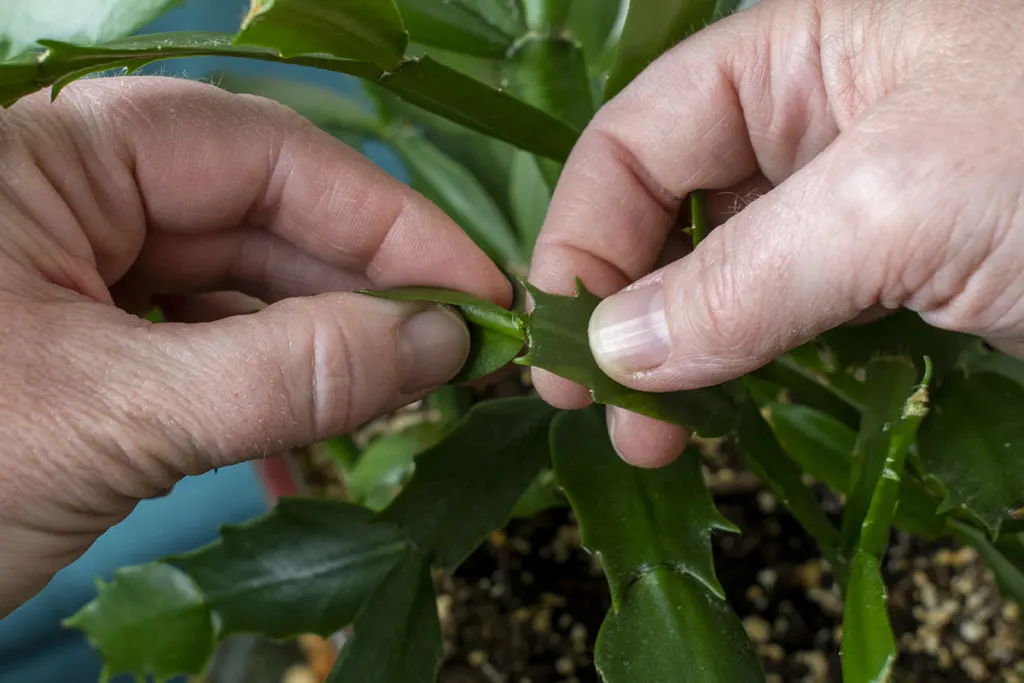
Ta-dah! You’ve just pruned your Christmas cactus.
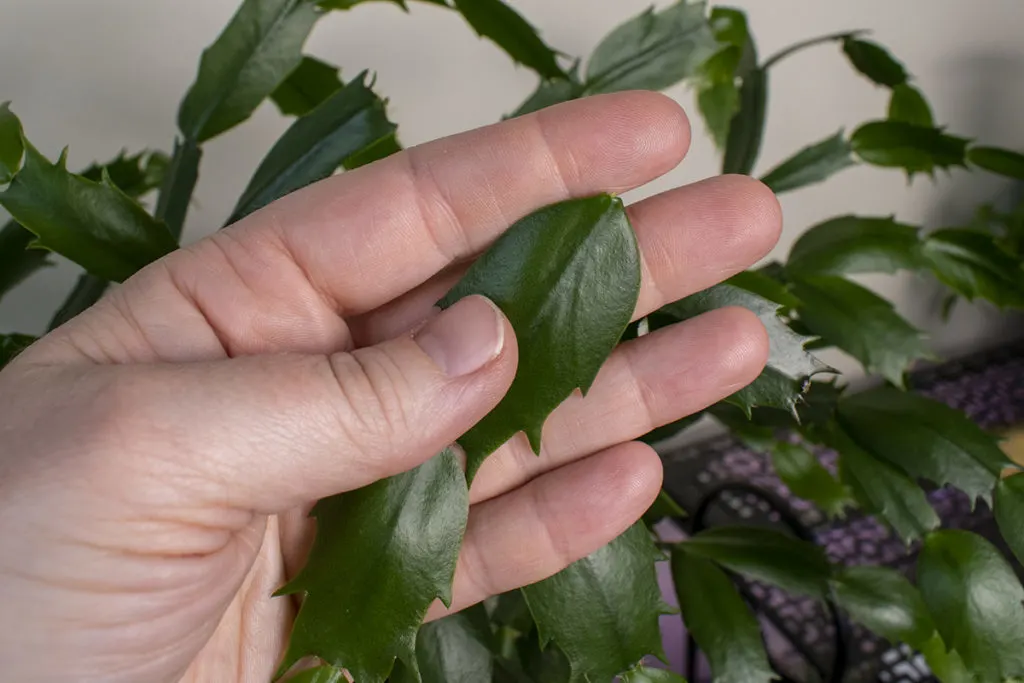
If you’re taking off some length near older and thicker stems, you’ll need to use a clean and sterilized knife or scissors. You can see in the photo below the joints where this would be necessary. Basically, anywhere where the cladode has started to grow thicker than normal.
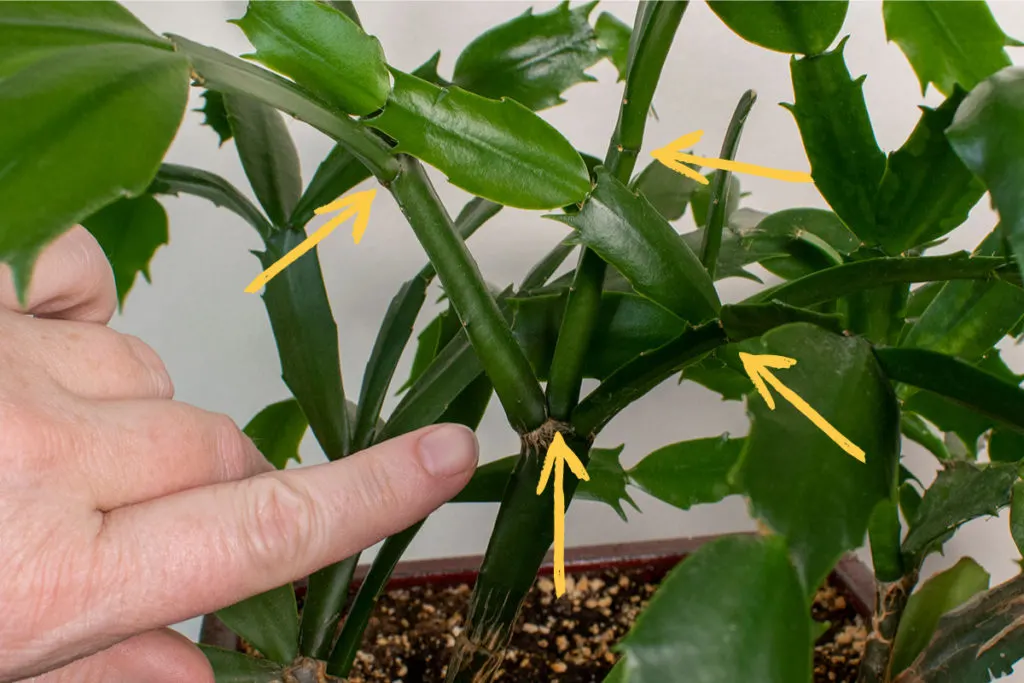
You don’t want to twist off these thickened cladodes as you risk yanking the whole segment out of the dirt or tearing the plant.
Where you take off segments and how many, that’s up to you.
It all depends on your pruning goals. The general rule of thumb is that you can remove up to a third of the plant without causing it stress.
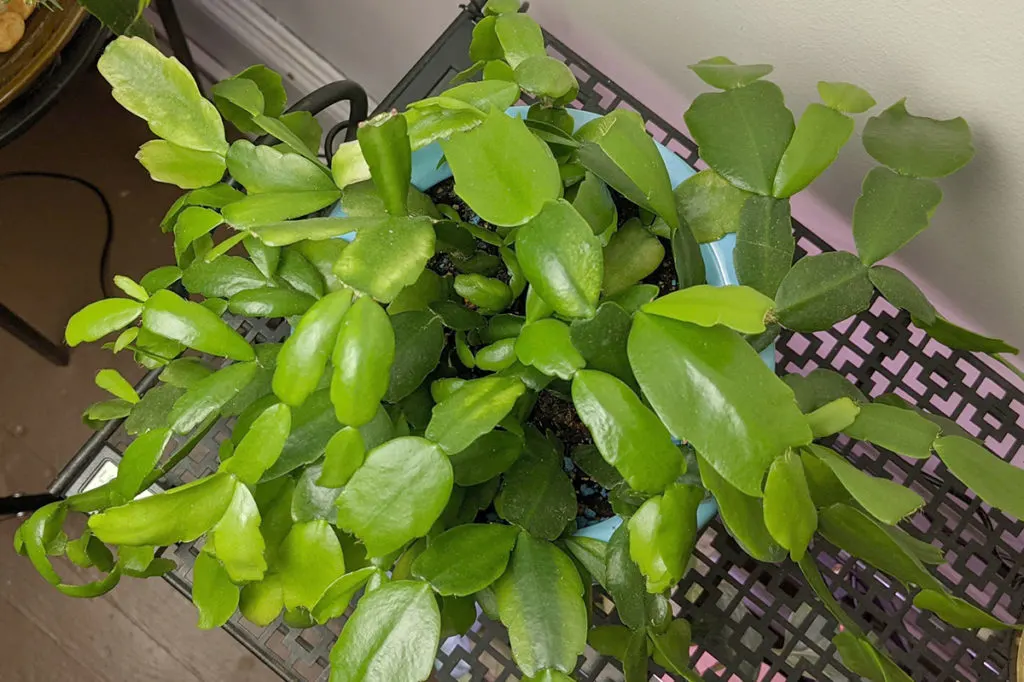
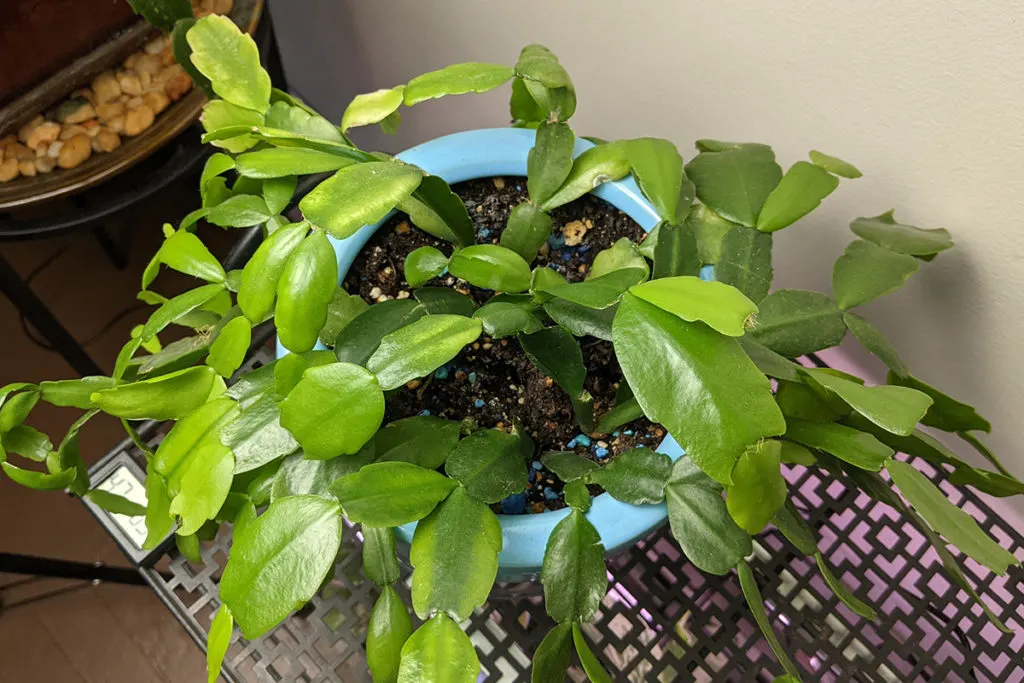
As you can see with my true Christmas cactus, it was very crowded in the interior. I’ve had issues with fungus gnats, so I wanted to thin out this plant a bit to improve airflow by the soil. I took out quite a few tiny segments.
Epiphytes, am I right?
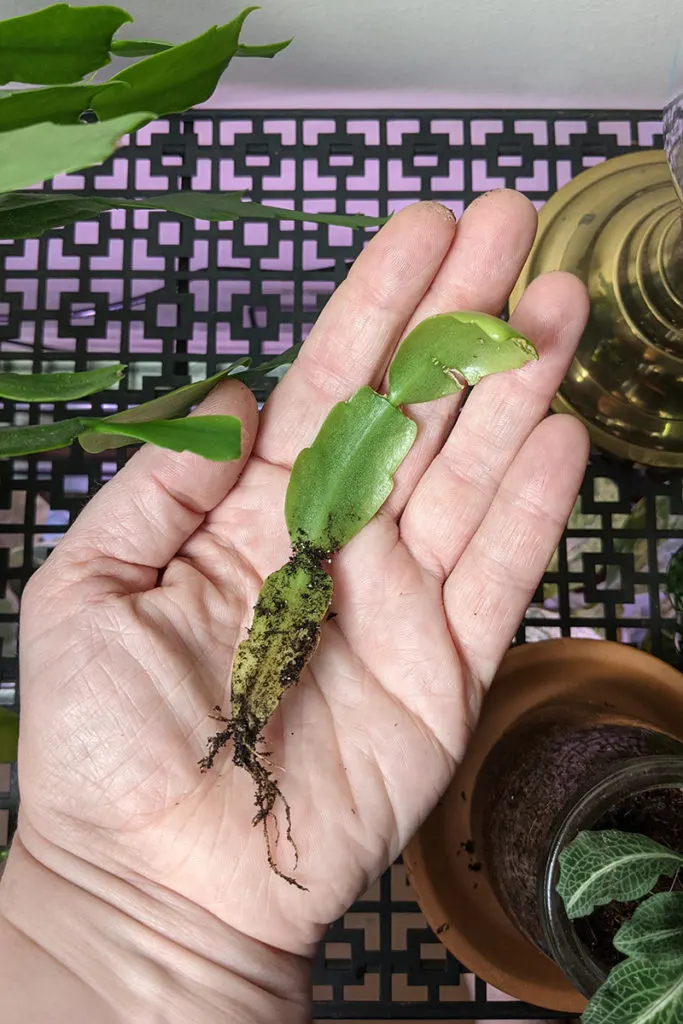
I even removed one of the original cuttings I had planted when I started this plant two years ago. It’s got plenty of new cladodes, but you’ll notice how scraggly the roots are. Again, epiphytes don’t generally need large root systems to thrive.
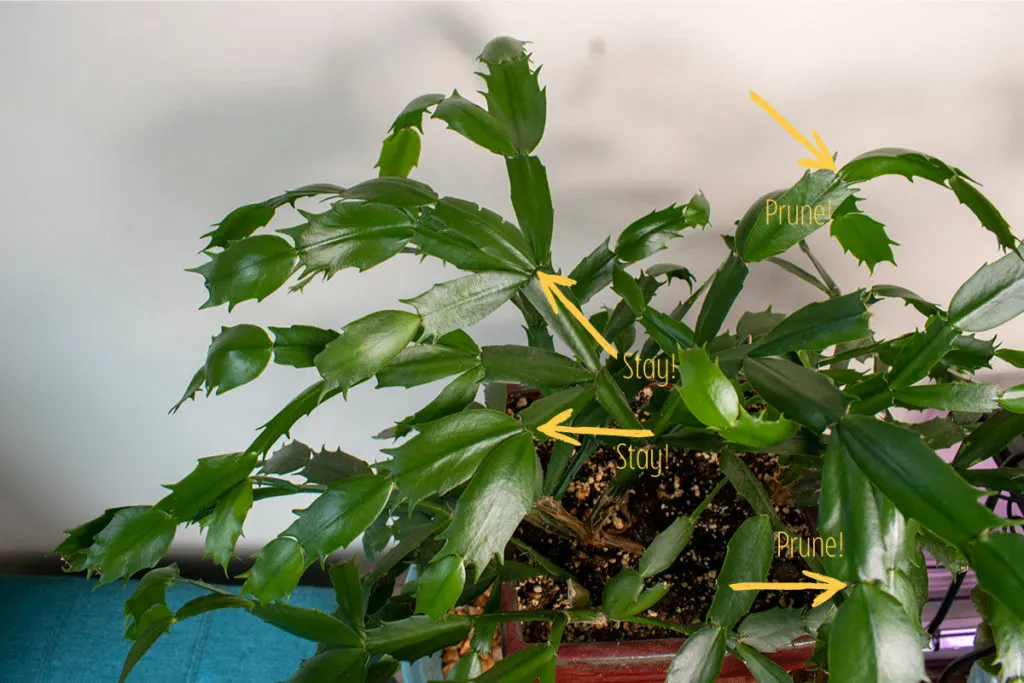
For my thanksgiving cactus, I decided to concentrate on the canopy as I had plenty of airflow at the base of the plant. I wanted a bushier top, so I started looking at spots where segments branched out.
I didn’t prune segments that had two or more new segments growing from them, but I trimmed back leggier segments that weren’t branching out. This will hopefully encourage the plant to create new cladodes on those spots as it enters the growth phase.
Post-pruning Care
Wait a few days after you’ve pruned the plant, then mist it well. This will allow the plant to scar over any areas where you removed segments. The moisture will help to refresh your plant.
Of course, once you’ve pruned your Christmas cactus, you’re left with a bonus – cuttings to make new cactuses!
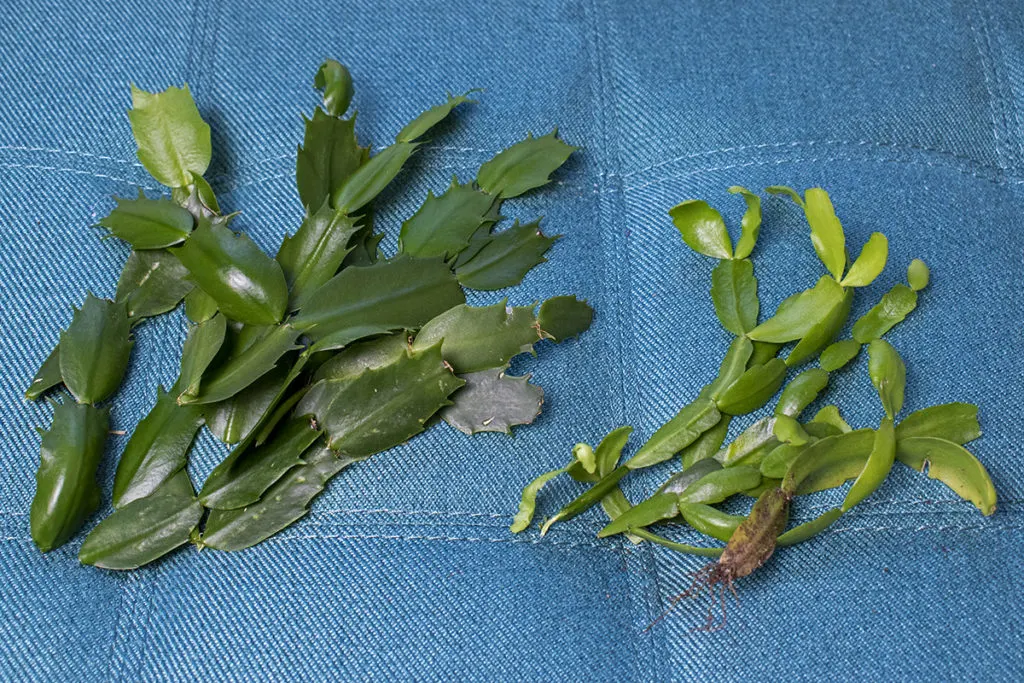
And schlumbergera is one of the easiest plants to propagate. You can read how to grow new plants from your pruned cuttings here:
Recommended Reading:
Christmas Cactus Not Flowering & 12 More Common Holiday Cactus Problems
10 Things Every Christmas Cactus Owner Needs To Know
African Violets: How To Care, Get More Blooms & Propagate

Get the famous Rural Sprout newsletter delivered to your inbox.
Including Sunday musings from our editor, Tracey, as well as “What’s Up Wednesday” our roundup of what’s in season and new article updates and alerts.


